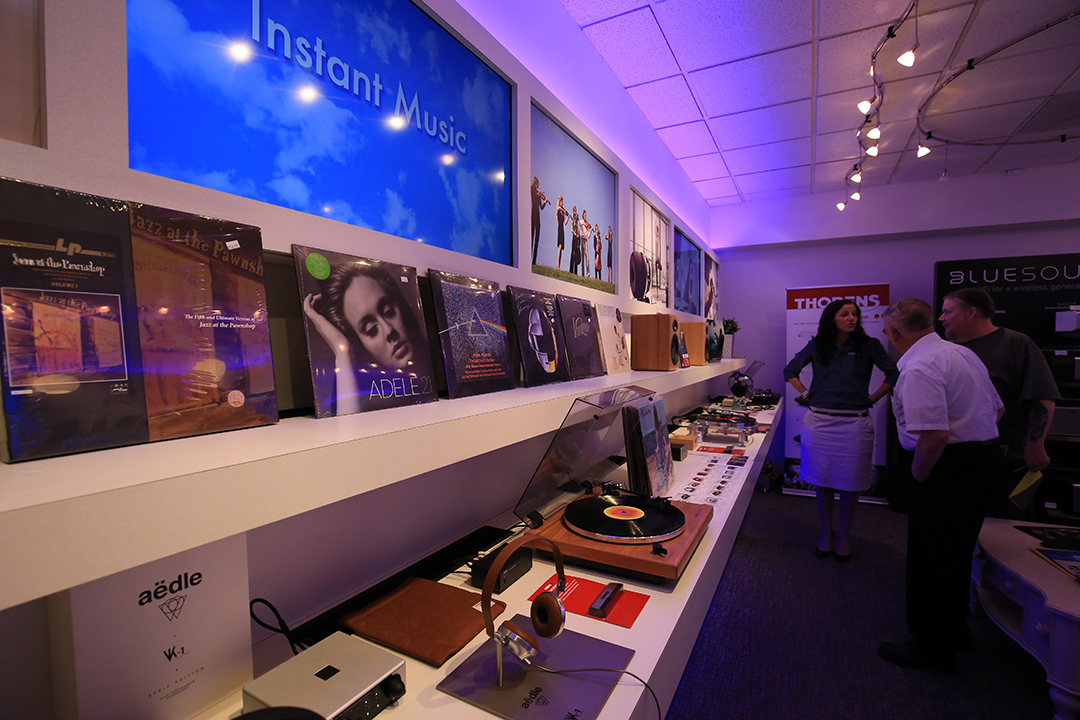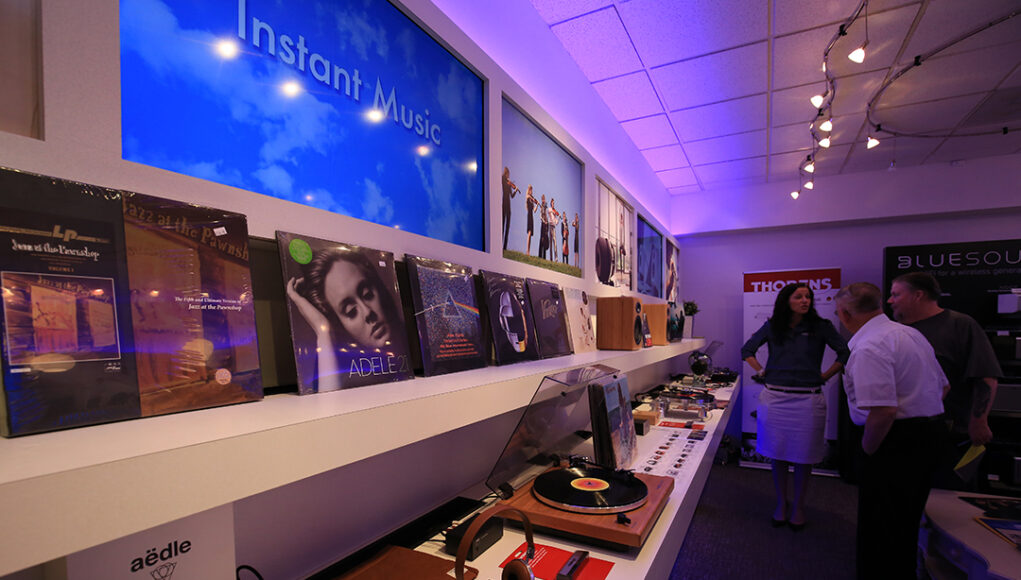The Evolution of Personal Audio Devices takes us on a whimsical journey through time, where headphones once resembled overcooked spaghetti and portable music players could easily double as weights for a workout. From the bulky boom boxes that blasted tunes at block parties to the sleek earbuds that snugly fit in our pockets, this tale is not just about sound; it’s about the music of our lives and the technology that made it all possible.
As we dive into this auditory adventure, we’ll explore the transformative leaps in audio technology—from the clunky cassette players of yesteryears, through the rise of CDs that chirped ‘look ma, no tapes!’ to the streaming services that have turned our playlists into a never-ending buffet of beats. We’ll uncover how these gadgets shaped our listening habits, our culture, and even our social lives, proving that sometimes, the best things do come in small, portable packages.
Ah, atoms. The tiny little building blocks of the universe, smaller than the footprint of a baby ant, and yet they possess the uncanny ability to create everything from banana peels to black holes. Talk about overachievers! If atoms had a LinkedIn profile, it would probably read: “Proficient in combining to form elements, creating matter, and causing existential crises.”
The Quirky World of Atoms: The Evolution Of Personal Audio Devices
Atoms are like the introverted nerds of the universe. They hang out in groups called molecules, rarely make it to parties (or at least the cool ones), and when they do, they can get pretty charged up. Literally! With their positively charged protons, negatively charged electrons, and neutral neutrons, they are like the most complicated family reunion you can imagine—where everyone is constantly arguing over who brought the potato salad.
But let’s dive deeper into these pint-sized particles. An atom is composed of three main ingredients: protons, neutrons, and electrons. Protons are the overzealous cheerleaders of the atom, always shouting “Positive vibes only!” while the neutrons sit quietly in the corner, sipping their neutral-flavored smoothies. Then there are the electrons, zipping around with more energy than a toddler on a sugar high, trying to figure out which orbit they belong to.
It’s a party, folks, and everyone is invited… unless you’re a quark. Then you’re just stuck being the building block of protons and neutrons, which sounds like a pretty thankless gig.
The Electron Dance
Now, let’s talk about electrons. If you thought your dating life was complex, try being an electron! They float around the nucleus in clouds of uncertainty, constantly moving faster than a cat chasing a laser pointer. Scientists say they exist in “orbitals,” which sounds fancy but is really just a way to say, “We have no idea where they are most of the time.” Think of it as the electron version of playing hide and seek, except the “it” never gets found.
When electrons gain energy, they jump to a higher orbital, much like how we jump out of our chairs when we hear the ice cream truck. But just like that sweet, sweet ice cream, the electrons can’t stay in that higher state for long. Eventually, they come crashing back down, releasing energy in the form of light. This is how we get neon signs, fireworks, and the shimmering sparkle of your Aunt Edna’s costume jewelry.
Who knew atoms were such overachievers in terms of entertainment?
The Periodic Table: A Social Network for Elements
Enter the periodic table, the ultimate social network for elements. Why is it a social network, you ask? Well, each element has its own personality traits—some are noble like helium, others are reactive like sodium, and then you’ve got the transition metals who are just trying to fit in. It’s like high school all over again, but instead of worrying about prom, they’re more concerned about making bonds.
Speaking of bonding, let’s address the elephant in the laboratory: chemical bonds! Atoms love to bond like long-lost friends at a reunion, and they do this in three main ways: ionic, covalent, and metallic bonds. Ionic bonds are like that friend who insists on picking up the tab—one atom gives away an electron to another atom, and suddenly, they’re a power couple.
Covalent bonds are the true love stories of the atomic world, where atoms share electrons like they’re sharing a delicious pizza. And then there’s metallic bonding, where atoms are just having a wild party, sharing electrons and creating a sea of electrons that keeps them all connected. It’s chaotic, but it works!
Real-Life Applications of Atomic Shenanigans
Atoms aren’t just hanging out in your chemistry class; they’re busy making the world go round! From the air we breathe to the water we drink, everything around us is thanks to these tiny troublemakers. Let’s take a moment to appreciate the real-life applications of atomic shenanigans.
For instance, did you know that without the little hydrogen atoms bonding with oxygen atoms, we wouldn’t have H 2O? That’s right, folks! No water means no swimming pools, no coffee to fuel our Monday mornings, and most importantly, no rubber ducky floating in your bathtub. The horror!
Atoms in Technology: The Unsung Heroes
Atoms have also played a huge role in developing technology. Ever heard of semiconductors? No? Well, let me enlighten you! Semiconductors are materials that conduct electricity under certain conditions—think of them as the moody teenagers of the atomic world. They can behave like conductors one moment and like insulators the next, depending on the temperature and other factors.
This unique property is what allows our gadgets like smartphones, laptops, and even your beloved microwave to function. Yes, folks, all that delicious popcorn is thanks to our friend, the atom.
And if you think atoms are just sitting around in your gadgets, think again! They’re also busy powering things up through atomic energy. Nuclear power plants harness the energy released during nuclear reactions, which essentially means splitting atoms apart like a magician pulling a rabbit out of a hat. The result? Electricity! Just don’t ask the rabbit how it feels about it.

The Future of Atoms
As we look to the future, it’s clear that the potential of atoms is limitless. Scientists are developing new ways to harness the power of these tiny particles, from improving renewable energy sources to creating more advanced materials for construction. Who knows? Maybe one day we’ll have buildings made entirely of atoms that can magically rearrange themselves for optimal living conditions.
It’s a dream, but with atoms, anything is possible.
In Conclusion: A Toast to Atoms!
So, the next time you’re sipping on your refreshing drink, munching on a snack, or even just staring at your phone, take a moment to appreciate the atoms that make it all possible. They may be small, but they have a big impact on our lives, creating everything from the air we breathe to the tech we use daily. Raise a glass (preferably filled with water) to the unsung heroes of the universe: the atoms! And remember, if someone tries to tell you that atoms are just tiny balls, you can confidently respond, “Nah, they’re the life of the party!”
Query Resolution
What was the first personal audio device?
The first personal audio device is often considered to be the Walkman, introduced by Sony in 1979, which allowed people to take their music on the go.
How have personal audio devices changed over time?
They’ve evolved from bulky cassette players to slim, wireless earbuds, with advancements in sound quality, portability, and connectivity paving the way for our current favorites.
What role does streaming play in audio evolution?
Streaming has revolutionized how we consume music, providing instant access to vast libraries of songs without the need for physical media.
Are wired headphones still relevant?
Absolutely! Many audiophiles prefer wired headphones for their superior sound quality and reliability, proving that sometimes, old-school is still cool.
What might the future hold for personal audio devices?
The future could bring audio devices that integrate AI for personalized listening experiences or even devices that can translate music into visual art. The possibilities are endless!






